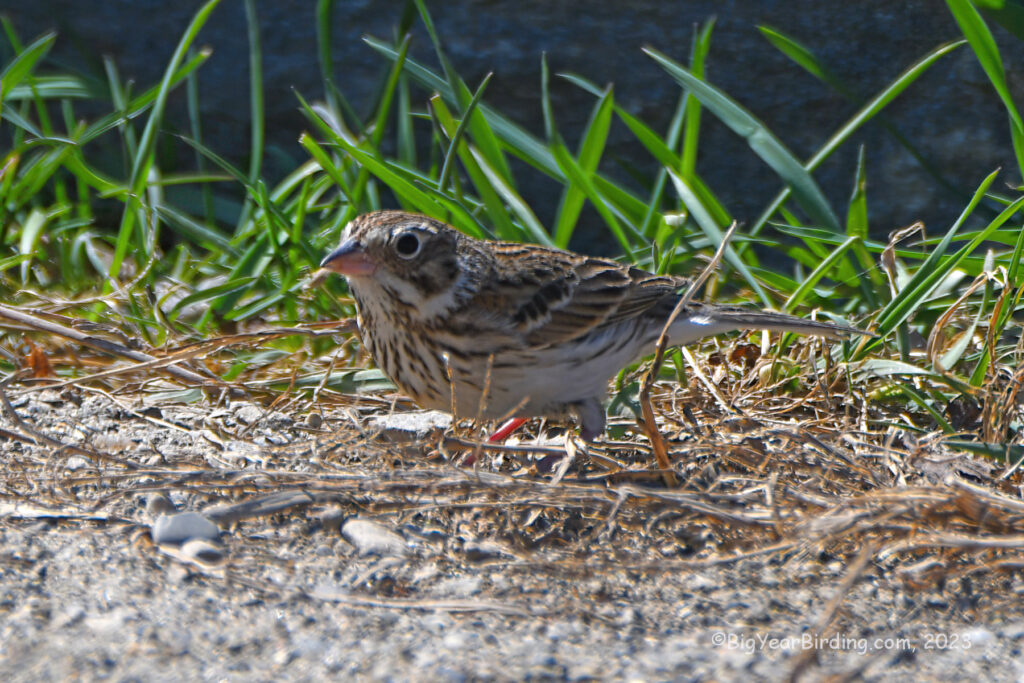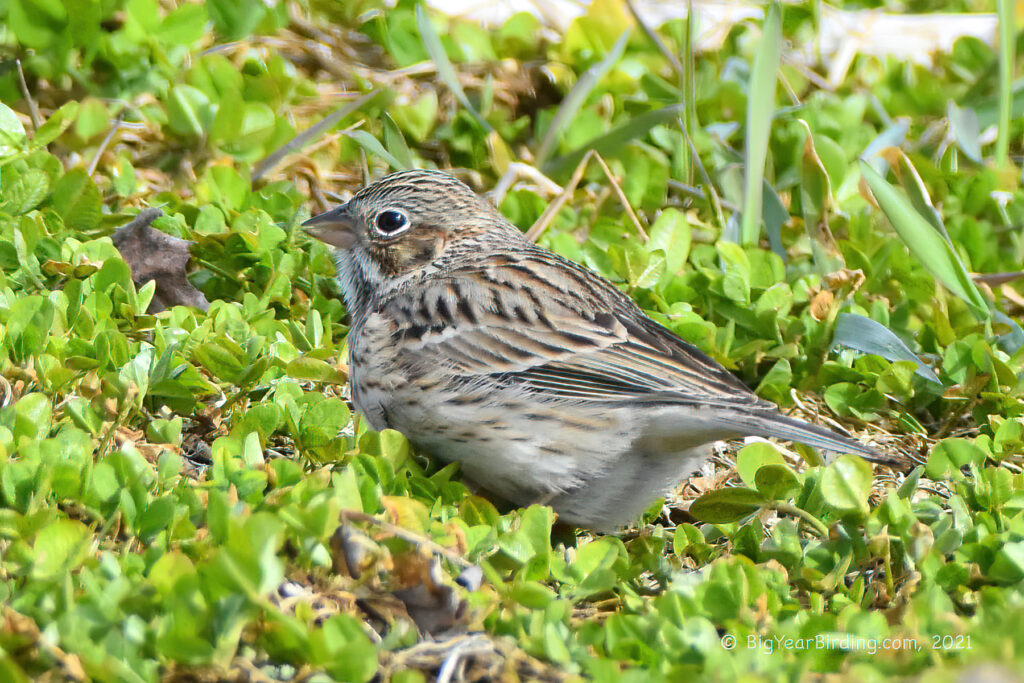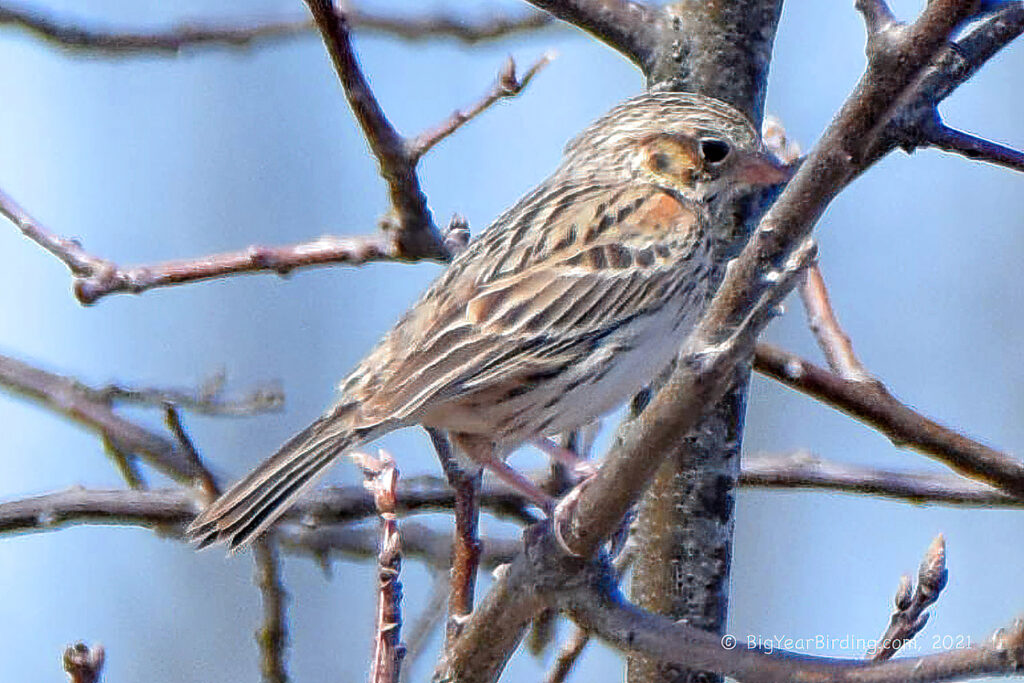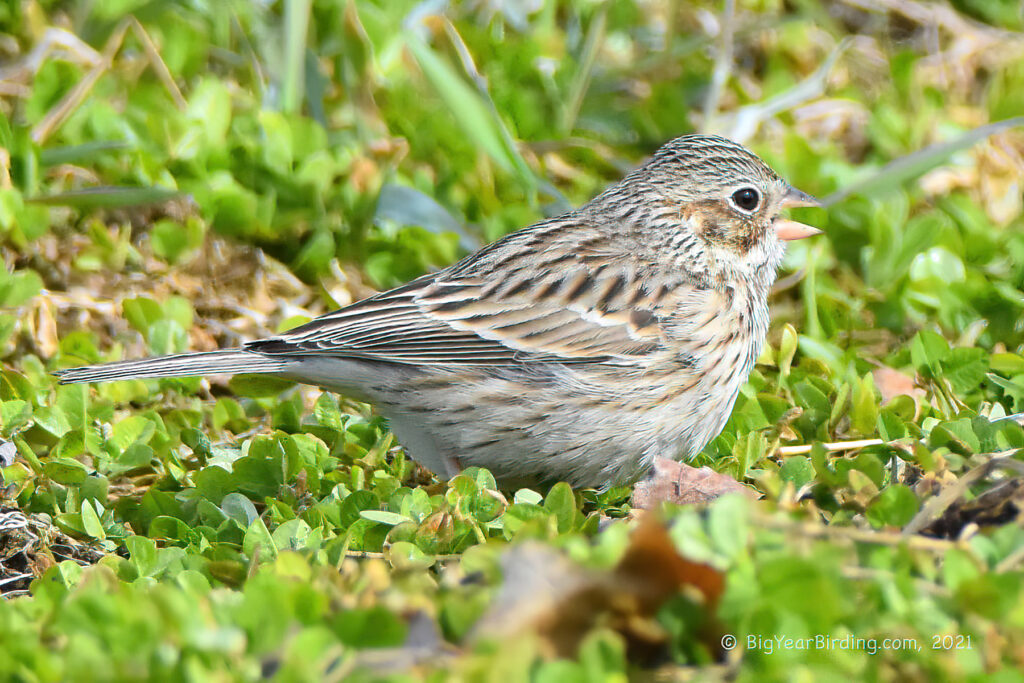The Vesper Sparrow (Pooecetes gramineus) is a small sparrow species that is commonly found in open grasslands and prairies across North America. It measures about 5.5 to 6.5 inches (14-16.5 cm) in length and weighs between 0.4 to 0.7 ounces (11-20 grams). Its plumage is a mix of brown, buff, and gray with black streaks on its back and wings. Its distinguishing field mark is a white eye ring that contrasts with its dark eye stripe, which gives it a distinctive appearance.

Vesper Sparrows are migratory birds that breed in the northern parts of North America during the summer months and migrate southward to winter in the southern United States, Mexico, and Central America. They can be found in their breeding range from late April to August, while their migration typically occurs from late September to early October. In the winter, they prefer to inhabit open fields, grasslands, and agricultural areas.
During the breeding season, the Vesper Sparrow can be identified by its melodious song, which is a series of sweet and clear notes that sound like “see-oo, see-oo, see-oo.” They typically build their nests on the ground or in low vegetation, and their clutch size ranges from three to six eggs. After hatching, the young Vesper Sparrows fledge after 10 to 12 days.
The Vesper Sparrow is a primarily seed-eating bird, but it also feeds on insects during the breeding season. They forage on the ground, often scratching the soil with their feet to uncover seeds and insects. During the winter, they may also feed on crop seeds or spilled grain in agricultural areas.

The Vesper Sparrow is considered a species of least concern by the International Union for Conservation of Nature (IUCN). However, their populations have declined in some areas due to habitat loss from agriculture and development. Conservation efforts to protect grasslands and prairies may benefit the Vesper Sparrow, along with other grassland bird species.


